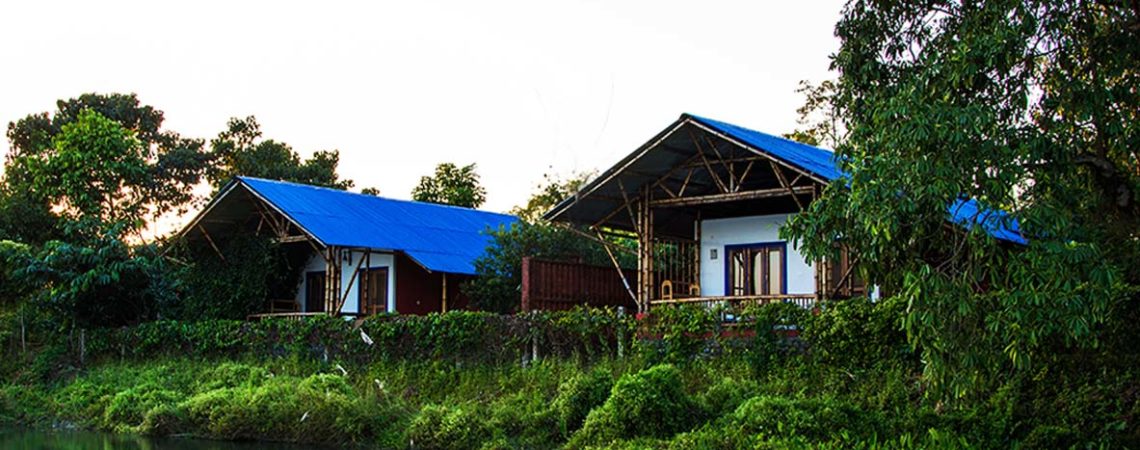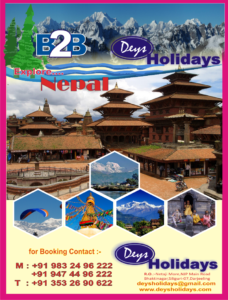“Natural World Heritage Site”
Manas National Park Tourism
Manas National Park is a UNESCO Natural World Heritage site, a Project Tiger Reserve, an Elephant Reserve and a Biosphere Reserve in Assam. The only tiger reserve in Assam and also famous for the rare golden langur and the red panda, Manas is one of the best-kept national parks in India.
Manas is recognized not only for its rich biodiversity but also for its spectacular scenery and natural landscape which includes a range of forested hills, alluvial grasslands and tropical evergreen forests. It’s home to India’s second-largest tiger population. It is also famous for its population of the Wild water buffalo. Manas harbours the maximum number of endangered species from India as listed in the IUCN Red Book.
One can easily spot rhinos and tigers while sitting on an elephant. Forest officials arrange rides on elephants from Mathanguri for visitors to Manas. You can see tea pickers going about their job in groups during the tea season. Best time to see activity is October till first week of December and again from mid March onwards.
Accommodations in Manas National Park
There are many options available for the stay . With prior booking the forest department rest houses are available. The forest rest house is on a the hill top and the Manas river flows besides it . There are also many budget lodges in Barpeta town.
What’s Great?
It is located at the foothills of the Himalayas in Assam providing picturesque views. Well known for its population of wild water buffalo. Also has many endangered species.
What’s not so Great?
Exploring the area by your own vehicle can be troublesome. Ideal for a short vacation only.
For Whom
The place is meant for nature lovers. Ideal for those families that live in cities and do not get the chance to have a close encounter with nature.
One Day Itinerary
Start your day at 5:00 AM by taking an elephant ride. It will be 1-2 hour trip. After this, you can take a walk along the river banks. Then visit the Manas Maozigendri Ecotourism Society where you can eat traditional Bodo style lunch and enjoy their music and dance. After lunch, you can go for river rafting which will take 2-3 hours. In the end, take the jungle safari to enjoy bird watching and sights of wild animals.
If you wish to cover the other spots such as Summer Palace and Panbang and spend more time in the jungle so you can spot more animals, then you should make a 2-3 days trip since it would be difficult to cover all spots in one day.
More information about Manas National Park
The park got its name from the Manas River that passes through the heart of the national park. The river is named after Serpent Goddess Manasa. The river is a major tributary of Brahmaputra. The park was started in 1990 and was declared UNESCO World Heritage Site in 1985. Agrang is the only village in this park whereas many other villages are at its boundaries. The park is divided into two biomes. One is Grassland Biome that has animals like Pygmy Hog, Indian Rhinoceros, Bengal Florican, and Wild Asian Buffalo. The second biome is Forest Biome that has animals like Slow Loris, Capped Langur, Sambar, Great Hornbill, Malayan Giant Squirrel and many other. The park boasts of 55 species of mammals, 380 species of birds, 3 species of amphibians, 50 species of reptiles and these species include animals like Indian Elephants, Indian Rhinoceros, Asian Water Buffaloes, Indian Tigers, Indian Leopards, Assamese Macaques, Barking Deer, and Black Panthers. The species like Assam Roofed Turtle, Hispid Hare, Golden Langur and Pygmy Hog are only found in this park in the whole world. The place is blessed with beautiful and rare flora. It is one of the places with rich biodiversity.
The summer palace of King of Bhutan lies beyond the bend of the Manas River. It lies on the Bhutan side of the Manas National Park. You need to hire a boat to cross over to the Bhutan side (take prior permission) and stroll about a kilometer to get to the summer palace for the Bhutan king, which is guarded by a solitary watchman.
White water rafting: Rafting in the azure water of the river at Manas National park make for a breathtaking, once-in-a-lifetime experience.
Manas Maozigendri Ecotourism Society
The Bodo tribe, indigenous to Assam, have a rich culture of textile, handloom and music. The local Bodo villagers have set up their own Eco-tourism Society in the National Park. They perform some of their traditional dances and music when they have visitors at the Eco-tourist camp. You get to see the local handlooms and textile woven by Bodo women and observe their life style from close quarters as you walk through the villages. Some times the villagers also take the visitors out on foot safaris. They can even offer you a night stay in the forest.
River Bank
Manas river is the largest river in the Bhutan region among it three other river system. It lies beteen two countries that is Himalayan foothills between southern Bhutan and India. It got its name after the Hindu deity, Manasa. The total length of the river approximated is the 367 km. Manas river is the largest river in the Bhutan region among it three other river systems. It lies beteen two countries that is Himalayan foothills between southern Bhutan and India. The river flows from Bhutan to Assam and finally meets with Brahmaputra River at Jogighopa. Surrounding the river are the two reserve forests known as manas wildlife sanctuary and royal manas national park. The forests focuses on elephant, biosphere and tiger reserve project.
Bird Watching
The main birding spots in the Park are on the east and northeast side of the Park at Kokilabari and at Alabari. Home to the largest population of Bengal Florican birds in India, the Park is home to about 500 varieties of birds. Popular ones are Herons, Serpent Eagles, Falcons, Grey Hornbills, Mergansers, Jungle Fowls, Bulbuls, Harriers, Ospreys, Giant Hornbills, Magpie Robins, Pied Hornbills, Brahminy Ducks, Scarlet Minivets, Bee-Eaters, Kalij Pheasants, Egrets, Pelicans and Fishing Eagles which are seen in large numbers at Kokilabari and Alabari.
Restaurants and Local Food in Manas National Park
You can get food in the Manas Maozigendri Ecotourism Society camps . All meals are served here and the cuisine is local. The local cuisine uses rice and fresh vegetables. Pork, chicken and fish are common, as the Bodos traditionally are non-vegetarians. While you are there do try the favourite drink of the Bodos – a rice-wine named ‘Zu Mai’. The forest department guest houses also provide food at reasonable rates.
For Details & Booking please contact to deysholidays@gmail.com Or sales.deysholidays@gmail.com



